
<<< PREV | FIRST | NEXT >>>
Ran got bit by a bushrat as a kid
(High-res version available for free over on my Patreon!)
https://unitedhelpukraine.org/ https://savelife.in.ua/en/
Ran got bit by a bushrat as a kid
(High-res version available for free over on my Patreon!)
https://unitedhelpukraine.org/ https://savelife.in.ua/en/
Category Artwork (Digital) / Comics
Species Unspecified / Any
Size 900 x 2561px
File Size 3.28 MB
could you train the leaf tail to attack people on command and then try and sell them as self defense pets by keeping the poison sacks on and having them lash out at whoever the owner tells them to? Cause I could see someone having classes to have people raise those things in a similar vain to guard dogs.
Meanwhile, aboard the USS Enterprise, Mr. Spock and Dr. McCoy have read this latest field guide. https://www.youtube.com/watch?v=nEwm0fv7OBA
Oy, OOPsiess! I'm here to remind you once again that there's a place called "Top Web Comics" https://www.topwebcomics.com/?home=3 that compiles comics from various places. There's a bunch of cool stuff there. They have monthly votes, so you can support OOPs there. You can vote once a day per device, so your PC, laptop, tablet, phone, etc.
I've noticed that you can sometimes even get in extra votes from different IP addresses, or if you're disconnected from your IP and open up again later.
It closed out last month at around 11161 votes and 63rd place. It's currently at 2603 votes and 82nd place. The highest it's reached is 36th place, and the top vote getters seem to end up with something close to 60,000 votes, at least recently.
Vote early, vote often! Help OOPs get noticed!
I've noticed that you can sometimes even get in extra votes from different IP addresses, or if you're disconnected from your IP and open up again later.
It closed out last month at around 11161 votes and 63rd place. It's currently at 2603 votes and 82nd place. The highest it's reached is 36th place, and the top vote getters seem to end up with something close to 60,000 votes, at least recently.
Vote early, vote often! Help OOPs get noticed!
I'll repeat my comment on this from last time:
"The numbers at TWC have gotten very strange recently. Hundreds of votes have been showing up suddenly every day, and the rankings throughout a day have been going radically up and down. I recently noticed that this is just confined to the comics in the top 100.
This is making the numbers and rankings pretty meaningless, and is really unfair to any comic not in the top 100. It also makes it a complete crapshoot where the comics end up at the end of the month. I haven't been able to find out what's going on with this."
"The numbers at TWC have gotten very strange recently. Hundreds of votes have been showing up suddenly every day, and the rankings throughout a day have been going radically up and down. I recently noticed that this is just confined to the comics in the top 100.
This is making the numbers and rankings pretty meaningless, and is really unfair to any comic not in the top 100. It also makes it a complete crapshoot where the comics end up at the end of the month. I haven't been able to find out what's going on with this."
Grass is a type of plant with narrow leaves growing from the base. Their appearance as a common plant was in the mid-Cretaceous period. There are 12,000 species now.[3]
A common kind of grass is used to cover the ground in places such as lawns and parks. Grass is usually the color green. That is because they are wind-pollinated rather than insect-pollinated, so they do not have to attract insects. Green is the best color for photosynthesis.
Grasslands such as savannah and prairie are where grasses are dominant. They cover 40.5% of the land area of the Earth, but not Greenland and Antarctica.[4]
Grasses are monocotyledon herbaceous plants. They include the "grass" of the family Poaceae, which are called grass by ordinary people. This family is also called the Gramineae and includes some of the sedges (Cyperaceae) and the rushes (Juncaceae).[5] These three families are not very closely related, though all of them belong to clades in the order Poales. They are similar adaptations to a similar life-style.
With about 780 genera and about 12,000 species,[3] the Poaceae is the fifth-largest plant family. Only the Asteraceae, Orchidaceae, Fabaceae and Rubiaceae have more species.[6]
The true grasses include cereals, bamboo and the grasses of lawns (turf) and grassland. Uses for graminoids include food (as grain, shoots or rhizomes), drink (beer, whisky), pasture for livestock, thatch, paper, fuel, clothing, insulation, construction, basket weaving and many others.
Many grasses are short, but some grasses can grow tall, such as bamboo. Plants from the grass family can grow in many places and make grasslands, including areas that are very dry or cold. There are several other plants that look similar to grass and are referred to as such but are not members of the grass family. These plants include rushes, reeds, papyrus and water chestnut. Seagrass is a monocot in the order Alismatales.
Grasses are an important food for many animals, such as deer, buffalo, cattle, mice, grasshoppers, caterpillars and many other grazers. Unlike other plants, grasses grow from the bottom, so when animals eat grass, they usually do not destroy the part that grows.[7] This is part of the reason why the plants are so successful.
A common kind of grass is used to cover the ground in places such as lawns and parks. Grass is usually the color green. That is because they are wind-pollinated rather than insect-pollinated, so they do not have to attract insects. Green is the best color for photosynthesis.
Grasslands such as savannah and prairie are where grasses are dominant. They cover 40.5% of the land area of the Earth, but not Greenland and Antarctica.[4]
Grasses are monocotyledon herbaceous plants. They include the "grass" of the family Poaceae, which are called grass by ordinary people. This family is also called the Gramineae and includes some of the sedges (Cyperaceae) and the rushes (Juncaceae).[5] These three families are not very closely related, though all of them belong to clades in the order Poales. They are similar adaptations to a similar life-style.
With about 780 genera and about 12,000 species,[3] the Poaceae is the fifth-largest plant family. Only the Asteraceae, Orchidaceae, Fabaceae and Rubiaceae have more species.[6]
The true grasses include cereals, bamboo and the grasses of lawns (turf) and grassland. Uses for graminoids include food (as grain, shoots or rhizomes), drink (beer, whisky), pasture for livestock, thatch, paper, fuel, clothing, insulation, construction, basket weaving and many others.
Many grasses are short, but some grasses can grow tall, such as bamboo. Plants from the grass family can grow in many places and make grasslands, including areas that are very dry or cold. There are several other plants that look similar to grass and are referred to as such but are not members of the grass family. These plants include rushes, reeds, papyrus and water chestnut. Seagrass is a monocot in the order Alismatales.
Grasses are an important food for many animals, such as deer, buffalo, cattle, mice, grasshoppers, caterpillars and many other grazers. Unlike other plants, grasses grow from the bottom, so when animals eat grass, they usually do not destroy the part that grows.[7] This is part of the reason why the plants are so successful.
One small added detail is that many species of grass are perennial, but almost all of the grasses that have been bred for food production are annuals. Annual grasses die after producing seeds, and must be replanted every year, while perennial grasses have vastly more extensive root systems, making them vital for controlling erosion. If Ran enjoys a beer, or has ever had, you know bread, he owes a debt to grasses!
Poor Ran and his grass trauma. If he hadn’t been bit by a bush rat, I’m sure he would’ve researched everything there is to know about grass. Just hope no one thinks he spends too much time in The Teeth and tells him to touch grass; it might trigger something.
Also, I think it’s cool the sun rat uses its fin to regulate body heat. That’s been theorized about for dinosaurs such as spinosaurs and ouranosaurus which have a similar fin on their back.
Also, I think it’s cool the sun rat uses its fin to regulate body heat. That’s been theorized about for dinosaurs such as spinosaurs and ouranosaurus which have a similar fin on their back.

 FA+
FA+





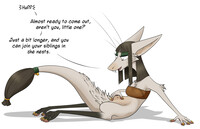

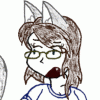



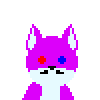


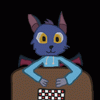






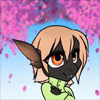

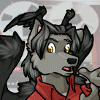
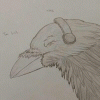








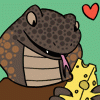











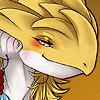




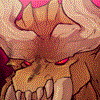
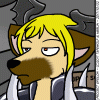

Comments